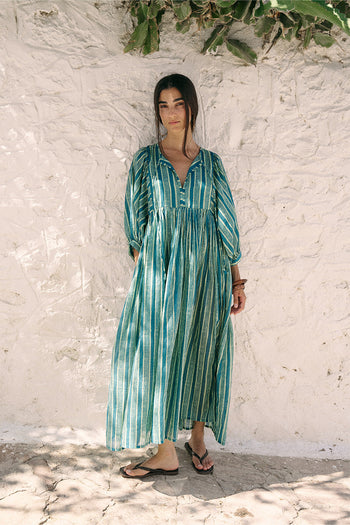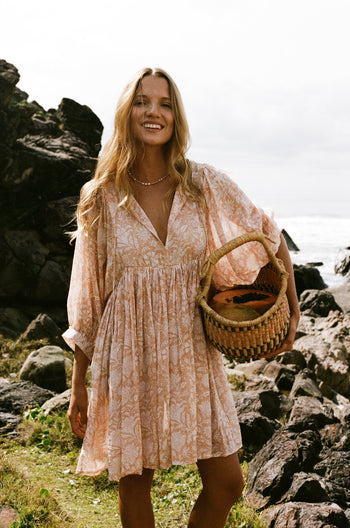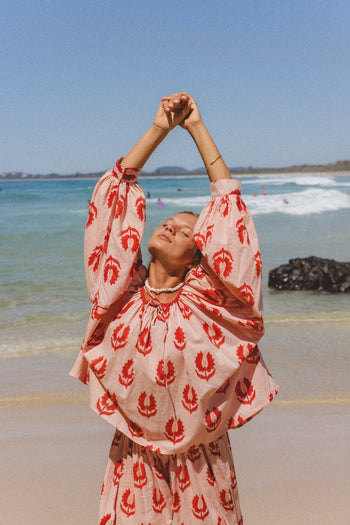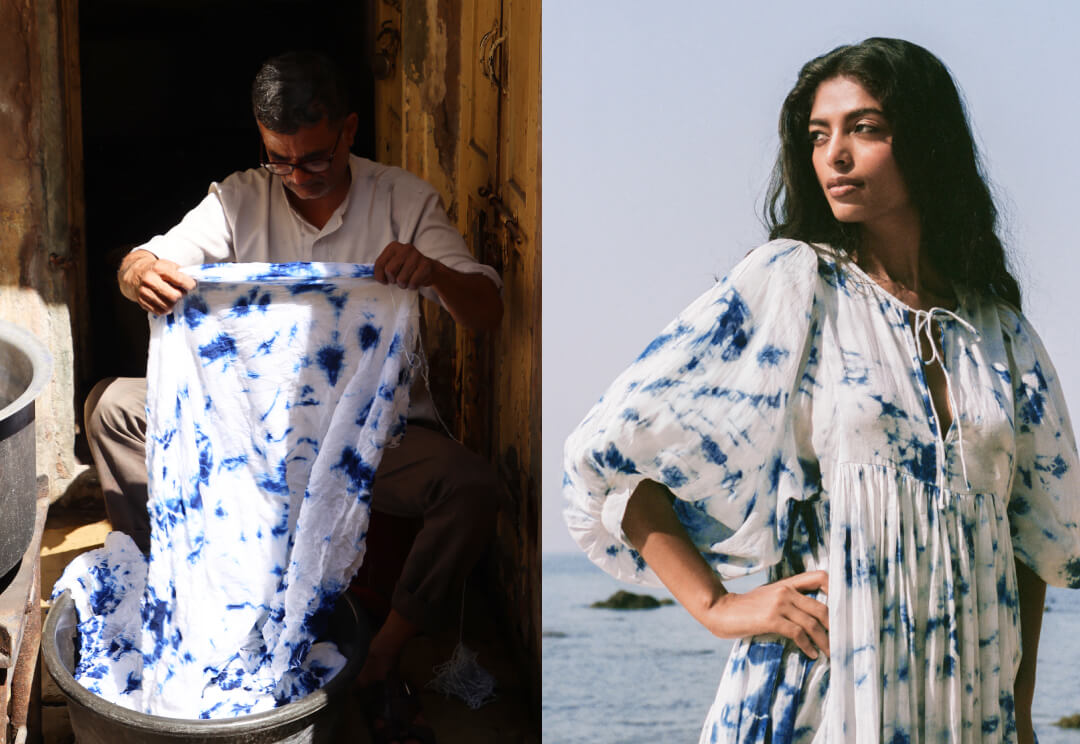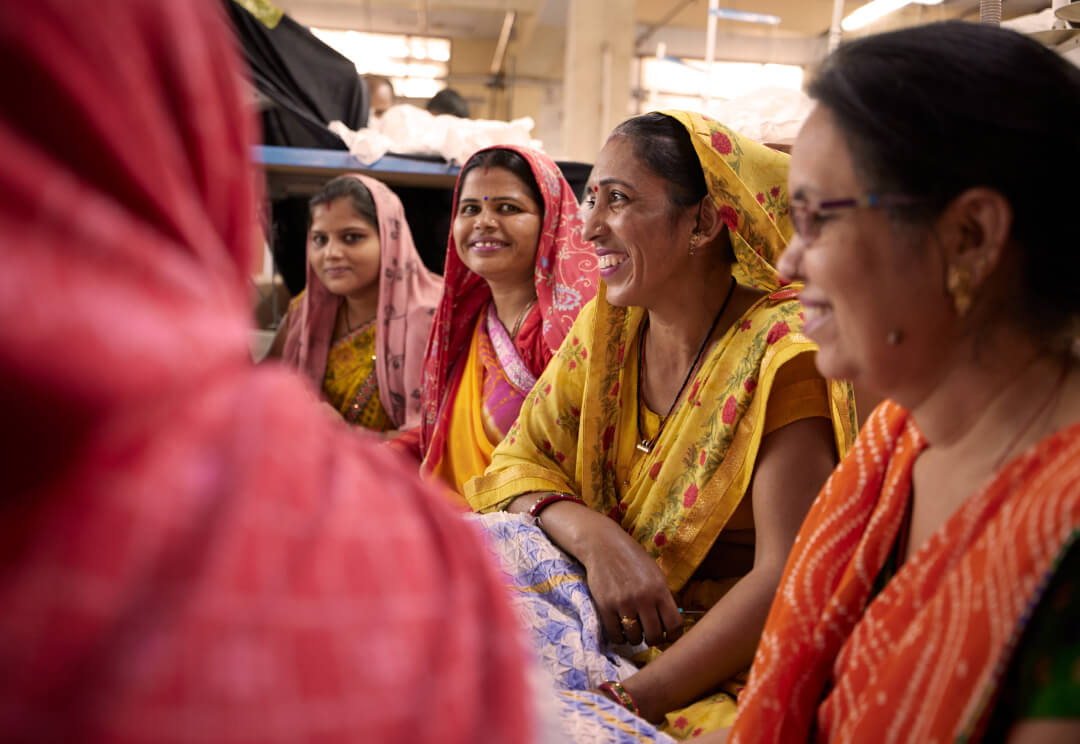On the Journal | Ayurvedic Wisdom with Sai

Meet Sai Harshitha (@lifeofsaiiii), a South Indian Model, creative, and passionate culinary artist based in the United Kingdom who truly embodies the Divine Feminine Goddess in all aspects of her being. Delving into her South Indian Heritage, Sai shares with us her deep love and profound knowledge surrounding Ayurveda and honouring the mind, body and spirit through conscious cooking and living. Sai’s goddess-infused insights on Ayurvedic inspired self-love practices, plant-based Ayurvedic cooking, and her values for living a healthy, holistic lifestyle are truly empowering. We hope you feel as inspired as we are to embody your inner Goddess after reading. Enjoy!
 Sai is wearing the Nora Maxi in Primrose
Sai is wearing the Nora Maxi in Primrose
Tell us a bit about your beautiful self
Namaskaram (hello in my mother tongue, Telugu) Daughters of India. My name is Sai Harshitha. I’m a South Indian Model and Creative based in the UK who loves to share her passion for her craft intertwined with her spiritual and religious journey. I find so much fulfilment in expressing and embodying my multi-passionate self through various creative disciplines such as dancing to classical indian music, painting from my heart, draping sarees to accentuate our soft feminine bodies, cooking wholesome ayurvedic and vegan meals as well as creatively directing and becoming my own muse whilst pouring life into all my beautiful visions.
Much of my art is deeply inspired by my connection to mother nature, feeling grounded in her presence and finding God amidst the serenity of her surroundings. I strongly feel my visions and art are God-gifted, therefore I understand it’s my dharma (life’s purpose in Sanskrit) to nurture what’s been placed on my heart. Belonging to a rich South Indian heritage, I find so much joy in enlightening the community around me of my culture through my knowledge of ancient Vedic scriptures and Hindu shastras, traditional blouseless saree drapes, and Ayurvedic recipes and rituals.

What are your core values for leading a healthy, holistic lifestyle and why?
My core values surrounding my holistic and Ayurvedic lifestyle embody the interconnection of my spiritual, emotional, mental and physical well-being. Listening to my heart and body in this present moment and allowing the sacred wisdom of Ayurveda to gently guide me from sunrise to moonrise is the foundation for me. My devotion to my holistic routine allows me to deepen my awareness of my internal dialogue, hold space for the intelligence behind each of my emotions and approach life with a greater sense of ease and equanimity.
Cooking and eating consciously whilst chanting an internal prayer (nāmasmaranam in telugu) and giving grace to God is an integral element of my holistic practice.
Another core value I deem integral to my routine is practising ahimsa. Ahimsa in Sanskrit translates to non-violence. Leading with love, grace and respect for all sentient beings and softening into a place of compassion is the truth of ahimsa. I embody this by following a plant-based lifestyle and incorporating seasonal, native produce, organic herbs and spices foraged back home from my motherland, India.
 Sai is wearing the Kyra Midi in Fuchsia Bloom
Sai is wearing the Kyra Midi in Fuchsia Bloom
What are some of your favourite self-love practices?
Dinārcharya is the Sanskrit word for self-love rituals one may integrate into their day to nurture and ground their spirit whilst gently balancing your doshas. Dinā translates to day whilst Acharya means routine or practice. Cultivating self-love and beauty rituals within my holistic routine is essential to me as these practices allow me to feel safe, calm and empowered within my skin and solitude.
Abhyangam or Snehana (sneha means love in Sanskrit and snehana means lubrication) is the Ayurvedic practice of oiling oneself with warm, nourishing herbal oil blends, extending love to both our external and internal organs. I love anointing myself head to toe with my special homemade herbal oil blends containing wood-pressed sesame oil, Indian jasmine buds and foraged rose petals. The soothing motions on my body allow me to melt into a space of love and compassion for myself, dissolving any tension or stagnant energy within my body. Softening into this romantic ritual with myself both at sunrise as well as under moonlight brings my heart utmost joy and peace.
Another self-love ritual that’s vital to my Sadhana (spiritual routine/practice in Sanskrit) is breathwork, prayer and meditation. Spending my early mornings and evenings soulfully in the prayer room chanting kirtans (devotional songs) or in meditation cleanses my heart and mind. Meditation serves me the opportunity to separate myself from worldly thoughts and melt into sacred oneness with God/the divine.
Prānayama (Sanskrit word for breath-work) similarly allows me to consciously regulate my nervous system. Prāna means life force and Ayama means expansion. Guiding our breath consciously can awaken us to our spiritual goals and dharma.
Holding space for my creative expression is another self-love ritual in my eyes. Softening into my creative heart space, dancing to deepen into my sensual energy, cooking and nourishing my soul with wholesome plant-based meals, embracing sweet moments with mother nature, painting my Godly visions, gracefully draping my heritage sarees, revelling in the study of ancient Hindu upanishads and shastras (ancient Hindu texts), each and every ritual I devote myself to empowers me to surrender to the divine feminine.

May you share with us some wisdom on the Sitayanam and understanding the true essence of Goddess Sita and the divine feminine?
Growing up in a highly spiritual and religious family, I was introduced to the practice of reading Hindu scriptures and chanting divine mantras from a young age. I hold these sacred rituals and practices very dear to my heart as they have truly deepened my awakening to the divine feminine (shakti).
Through studying and embodying the scriptures which paint enchanting visions and evoke spiritual visions surrounding the deities and goddesses within each tale, I’m able to express my love for the divine feminine through my art and creative disciplines.
The Sītāyanam tells the story of Goddess Sitā and her journey with her consort Ram. For centuries, this scripture has been often narrated from the divine masculine perspective of Rām however I wanted to delve into the scripture prioritising Sitā as the protagonist and relating to the journey and emotions felt by the divine feminine.
I feel deeply connected to Goddess Sitā, the goddess who manifested from Mother Earth, the one who holds an affinity to every plant, river, flower and animal and embodies divine knowledge on medicinal herbs and magical healing concoctions. Whilst reading and meditating on the Sītāyanam, I was able to merge with Goddess Sitā’s energy and embrace her nurturing and endearing traits. Being a true Earth sign myself, (Taurus) and being born on Earth day, I feel a deep affinity to Sitā Devi (devi means goddess in Sanskrit).
What is it you love about ethically crafted block-print designs?
I adore the dreamy silhouettes of each block-printed piece, especially as the ancient Indian art of block-printing holds deep cultural significance to me. The art of block-printing is practised throughout the states of Gujarat, Madhya Pradesh, Rajasthan and Andhra Pradesh (my home state). Every time I adorn DOI’s pieces and embrace this sacred Indian textile technique, I am reminded of the unparalleled skill the artisans behind these special garments possess and honouring them heart-fully. There is so much beauty in the slow and organic rhythm of handmade block-print pieces. I feel so much love and gratitude to be able to represent DOI who empower their artisans with each and every piece that’s curated.

Your food looks so delicious! Would you be so kind as to share one of your favourite recipes with us?
Most definitely, I would love to share a piece of my heart and culture with you that is my love for creating Ayurvedic South Indian delicacies. One of my most favourite recipes to make is modakkam laddoo (pronounced mo-dha-kam lud-doo) which are the sweetest steamed treats ever that melt effortlessly in your mouth. They’re made with organic jaggery, rice flour, freshly shredded coconut and golden roasted cashews.
I love to serve this with a side of Ayurvedic pink tea known as Panamrutham (pronounced paan-aam-ruth-um) which is infused with medicinal herbs, each embodying precious healing qualities. I’m so excited to give you an insight into my Ayurvedic cookbook!

Ingredients ~ makes 15 medium sized modakkam/steamed sweet dumplings
- Rice flour (1 cup)
- Water (1 cup)
- Freshly grated Coconut (1 cup)
- Jaggery or Coconut sugar (2/3 cup)
- Cardamom (elaichi) (3-4 finely powdered)
- Cold wood-pressed Sesame Oil (1 tsp)
- Organic Ghee (1 tsp)
- Pink Himalayan Salt (a pinch)
Method:
Make the sweet fragrant filling for the modakkam:
- Add 1 teaspoon organic ghee to a hot pan.
- Sauté together jaggery/coconut sugar and coconut until both blend well and the mixture turns thick. Do not overcook. There should be no excess moisture in the pan.
- Add cardamom powder. Turn off the stove and cool this completely.
Make the dough:
- Bring 1 cup water to a boil along with salt and ghee.
- Regulate the flame to low, then add the rice flour and give a good mix. Ignore the dough looking dry and crumbly at this stage.
- Turn off the stove and cover the pot. Set aside and let the dough steam in the residual heat. Rest until the temperature comes down a bit.
- While the mixture is still slightly hot, knead it to a soft, non-sticky yet smooth crack-free dough. The mixture will look dry so sprinkle a little hot or warm water and knead. I sprinkle about 2 to 3 tablespoons at this stage.
- Divide the dough to make 11 equal sized balls. Keep the balls covered with a damp cloth until you finish making all of the modakkam.
- Ensure the coconut filling has cooled down completely before you begin to make the modakkam. Take each ball to your palm and smoothen them to a crack-free and soft ball.
Hand make modakkam/ sweet dumplings:
- Take a ball and make a dent in the centre. Dip your fingers in water.
- In a circular motion begin to spread the dough to make a thin disc using your thumb and forefingers on both the hands.
- Pinch off little dough on the outer side of the disc to make pleats at a distance of ½ to ¾ inch.
- If the edges break, keep dipping your fingers in water and moisten the dough.
- Place 1 to 1½ tbsp coconut mixture in the centre.
- Bring together all the pleats and join them carefully. If needed, moisten the fingers and join them.
Steaming the modakkam/sweet dumplings:
- Next place all the modakkam in a greased steam basket. You can skip greasing and just spread a moist cloth in the steam basket. You can also sprinkle some saffron over the modakkam but this is entirely optional.
- Place a rack/trivet in a steamer or pot. Pour 1½ cups water & bring to a rolling boil on a medium high heat.
- Place the steam basket inside the pot or cooker and cover with the lid. If steaming in a regular pot, your lid should have a vent for the steam to escape. Steam the modakkam on a medium high heat for 10 minutes.
- The steaming timer starts from the time you cover the pot/ cooker. After 10 to 12 mins, turn off the stove and let the modakkam rest in the cooker for 5 mins.
- Remove the steam basket and place on a cooling rack.
- Pour a few drops of organic ghee over the modaks. Give grace and enjoy in gratitude.
For more delicious plant-based Ayurvedic recipes follow @lifeofsaiiii.



